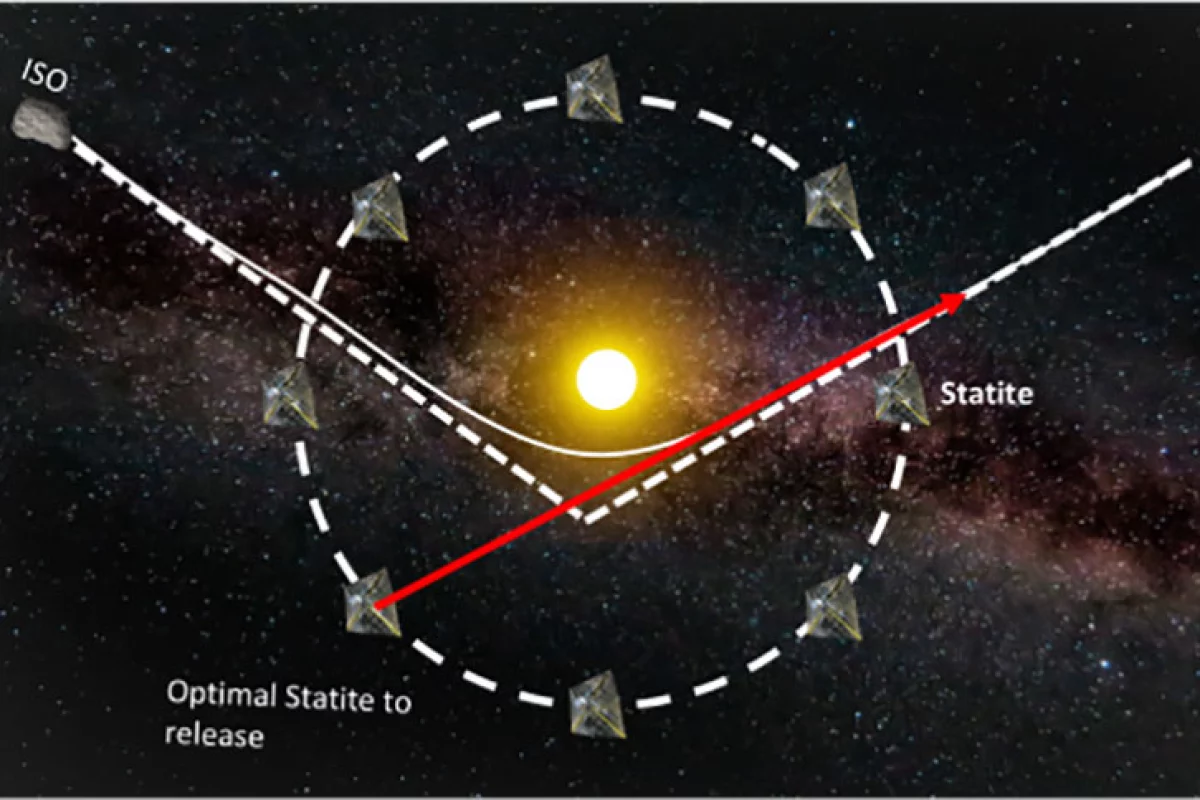An MIT research proposal outlines a new method for rendezvousing with interstellar objects (ISOs) like ‘Oumuamua using a solar slingshot technique. By using solar sails to position deep-space probes on the edge of the solar system, the idea is to use the gravitational pull of the Sun to accelerate the spacecraft and set it on an intercept course with an interstellar visitor.
When 'Oumuamua passed by in 2017, it was a truly historic event. For the first time, an object from interstellar space was detected entering the solar system. Traveling on a hyperbolic trajectory, it flew through the inner system before returning to the outer darkness, never to return. As it did so, observatories around the world focused on the object, giving scientists their first close-up glimpse at something that didn't originate in our system.
However, a glimpse was all they had time for. Ideally, a long, leisurely look would have been preferable, but there wasn't any time to even plan a mission to send a spacecraft to visit 'Oumuamua – much less launch one. Worse, such a mission would have faced major technical challenges. Not the least of which being the requirement of a massive rocket to reach the needed velocity to overtake the object.
"There are a lot of fundamental challenges with observing ISOs from Earth – they are usually so small that light from the Sun needs to illuminate it in a certain way for our telescopes to even detect it," says Linares Richard Linares, an assistant professor in the Department of Aeronautics and Astronautics (AeroAstro) at MIT. "And they are traveling so fast that it’s hard to pull together and launch a mission from Earth in the small window of opportunity we have before it’s gone. We’d have to get there fast, and current propulsion technologies are a limiting factor."

Linares has developed an alternative to conventional space missions in the form of a concept called "dynamic orbital slingshot for rendezvous with interstellar objects." Selected as a Phase 1 study in the NASA Innovative Advanced Concepts (NIAC) Program, the idea is not to place a spacecraft in orbit around the Sun, but exactly the opposite.
When a deep-space mission is launched, what is actually happening is the rocket is shifting the spacecraft from the Earth's orbit into another. This takes a lot of energy and requires precise timing and calculation to make sure that the probe and the target end up in the same place at the same time.
What Linares is proposing is launching "statites", or "static satellites", that, once launched en masse from Earth, would use solar sails with a carefully calculated mass-to-area ratio to move to the edges of the solar system and be positioned in a vast circle. The clever bit is that the statites would not orbit the Sun. Instead, the solar sails would reduce the velocity of the spacecraft to zero. Then the sail would act like a kite, balancing the pressure of the solar wind against the pull of the Sun, leaving it hovering in one place.
The idea is that the statites would wait like a roller derby player hanging on the outer rail, who then lets go and swoops down the slope. If an ISO is spotted, at a calculated moment the selected statite would furl its sail and plummet down toward the Sun, picking up tremendous speed as it travels. It would then go into a slingshot trajectory that would allow it to overtake and rendezvous with the ISO. The statite would then deploy a CubeSat, which would orbit the ISO for an indefinite time.
"Studying an interstellar body close-up would revolutionize our understanding of planet formation and evolution," says Benjamin Weiss, professor of planetary sciences in the Department of Earth, Atmospheric and Planetary Sciences, who is working with Linares and other MIT faculty to develop the concept. "For the first time, we could obtain sensitive measurements of the bulk composition of other solar systems. We could also learn how quickly and how commonly objects transit between solar systems, which will tell us the feasibility of the interstellar transfer of life."
According to MIT, Linares and the other researchers will spend the next nine months studying the feasibility of the concept, its performance, and what a potential mission would look like.
Source: MIT





